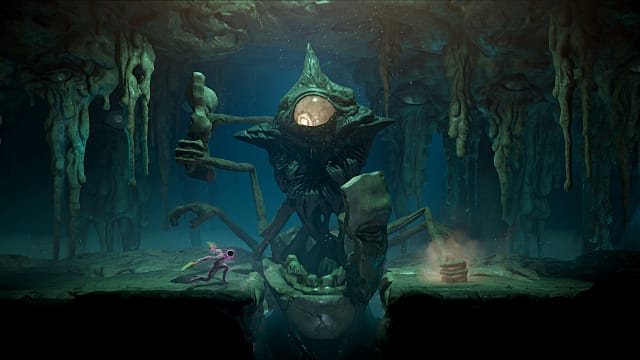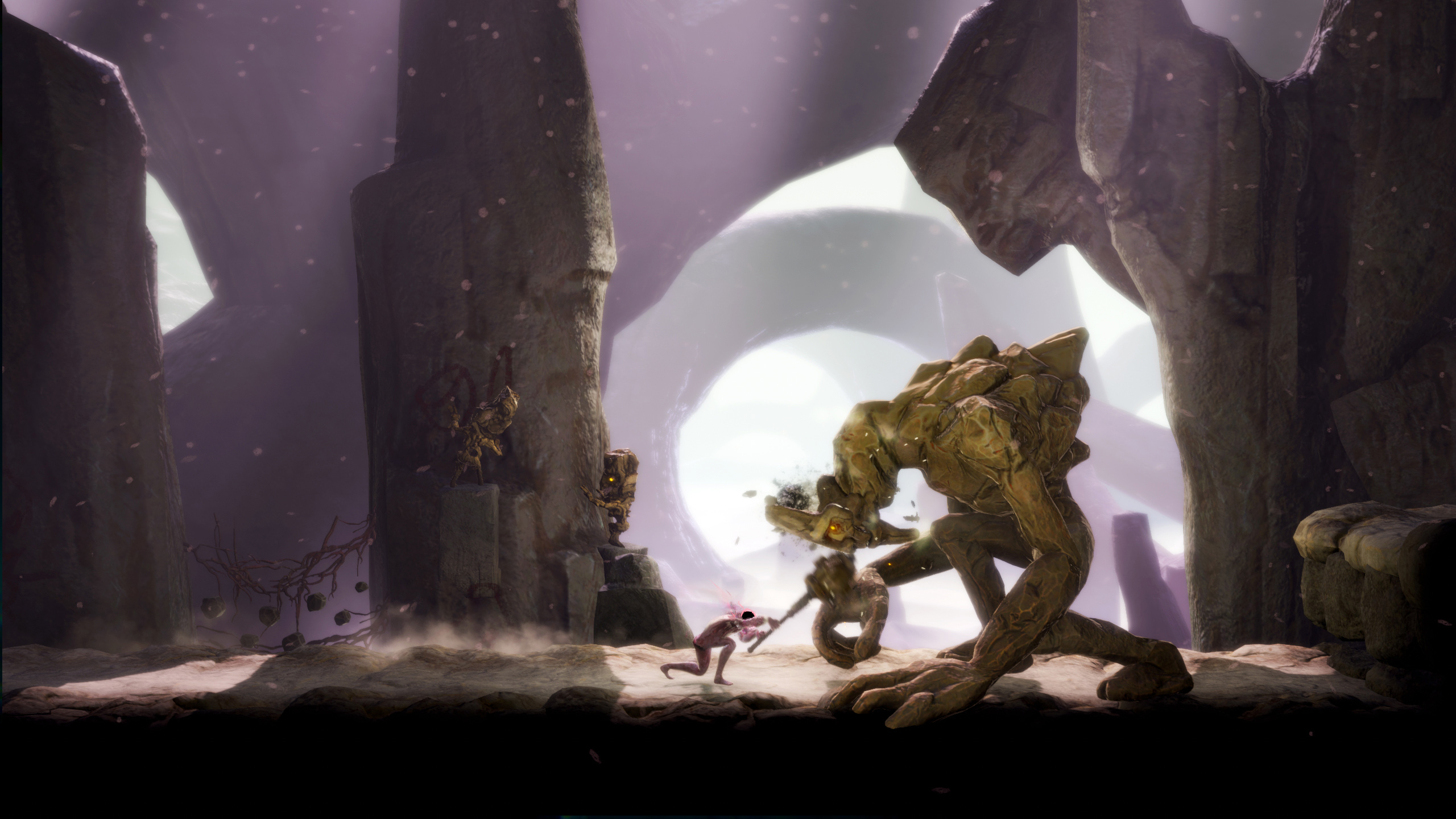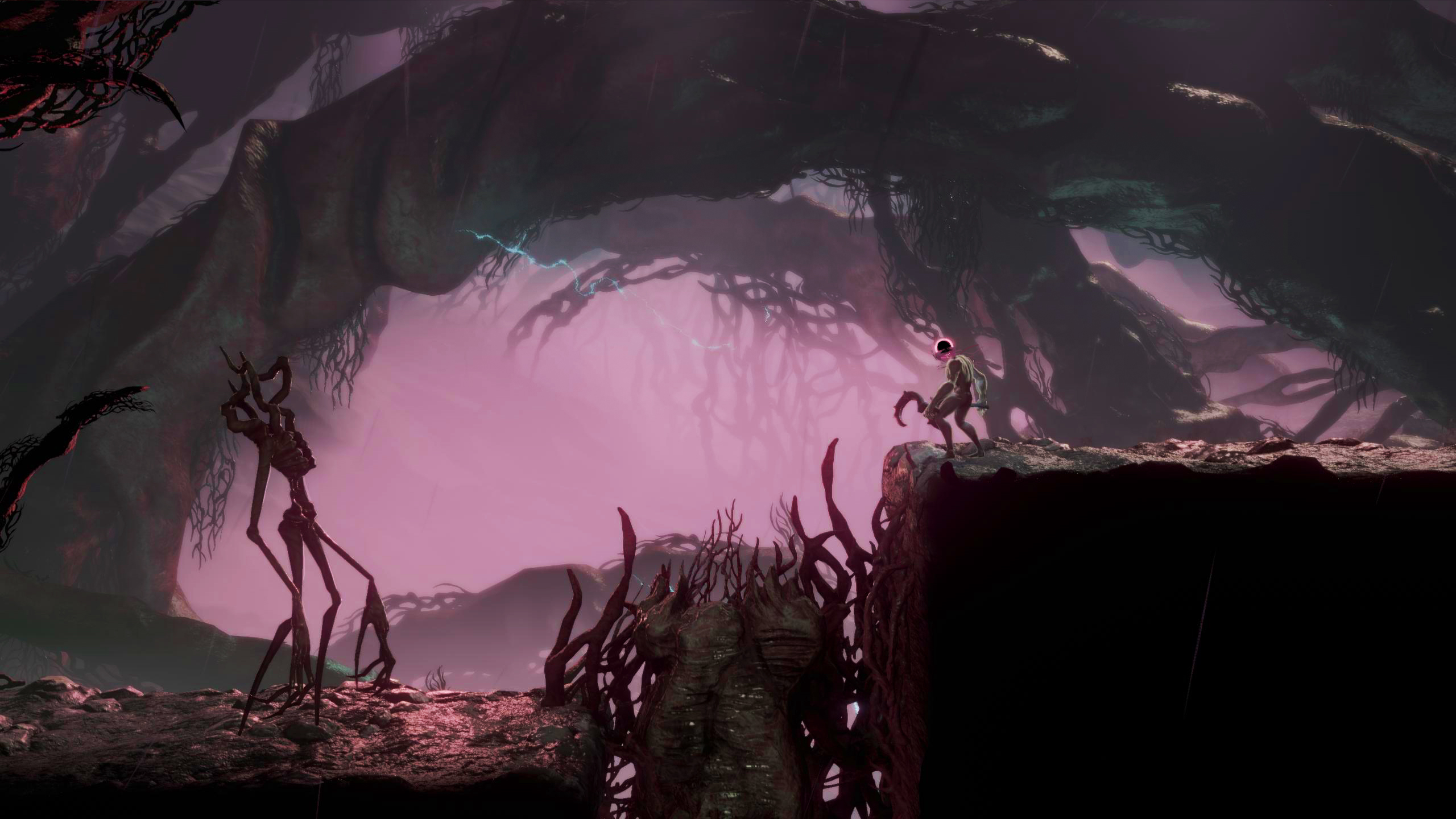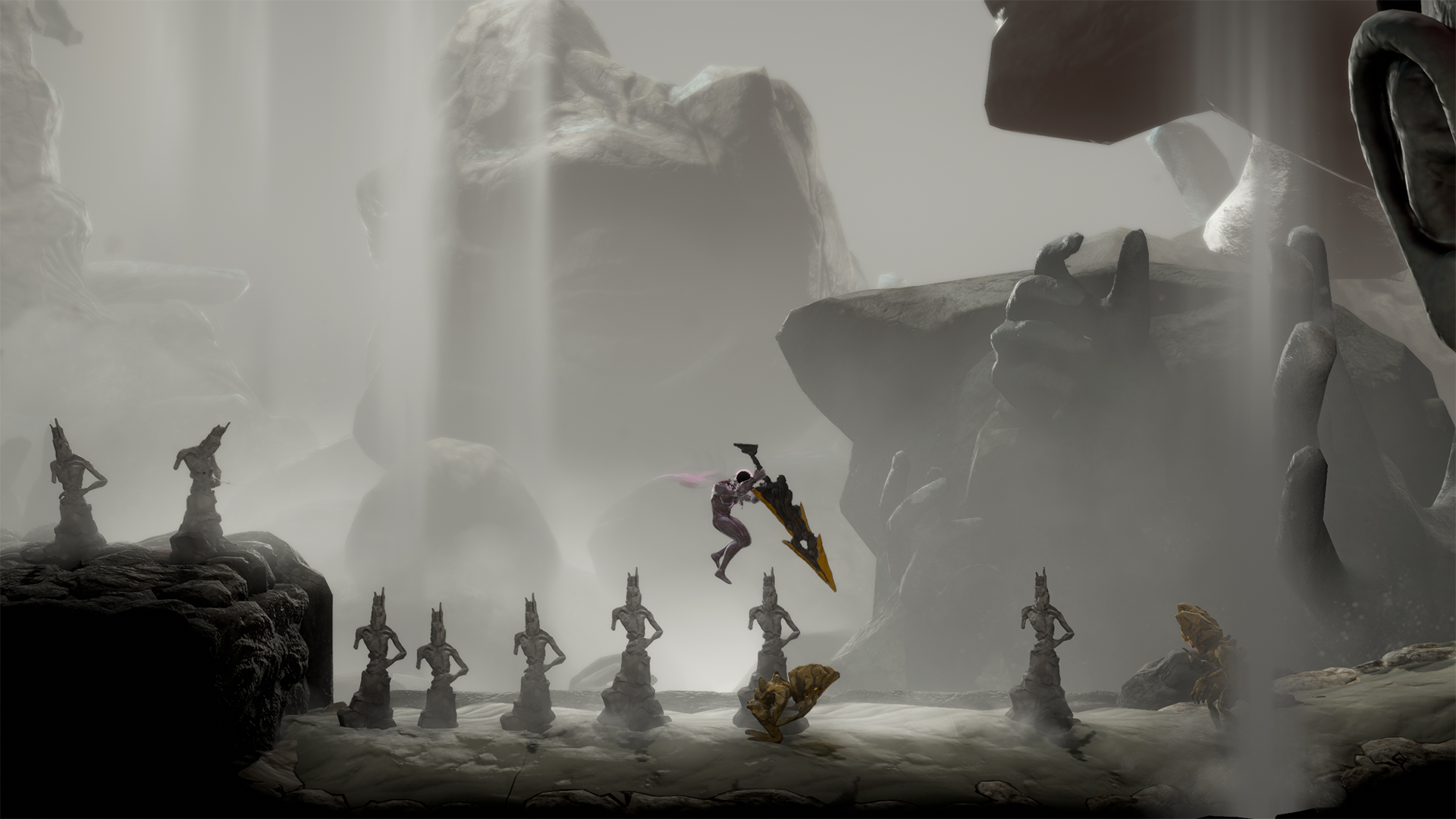GRIME has grand ambitions. It combines the exploration and progression systems of a Metroidvania with the RPG and combat elements of a Souls-like. It also throws in some precision platforming and monster collecting mechanics from the likes of Bloodstained. Finally, the whole thing’s topped off with a surrealist body-horror aesthetic.
On paper, there are almost too many influences, but GRIME combines them deftly. The few frustrations it presents are mostly overshadowed by the quality of the main attractions: its boss fights, music, and traversal.
GRIME also avoids some of the mistakes other games like it do, usually focusing on what it does best and letting those elements shine. It’s only when it tries to lean on its weaker pieces that it falls incredibly flat, but those places are few and far between.
GRIME Review: An Unhealthy Amount of Fun
One of GRIME’s main attractions is its boss fights. All of them are fantastic — there wasn’t a single one I disliked. They’re varied in scope, diverse in mechanics, and demanding in different but exciting and fun ways. They also do an excellent job of teaching you something new about the game each time, whether that’s developing new strategies or using your current abilities in new ways.
It’s a design philosophy that begins with the first boss and doesn’t stop until the final one. More importantly, every boss uses systemic and visual language to tell you exactly how to beat them. There are two attack types: white and red. White attacks you can parry, red attacks you cannot. If an attack comes out red, you’ll have to dodge it, no questions asked.
Bosses get progressively more complex as the game goes on, as well. The first one has maybe three or four attacks, all of them well telegraphed and simple to counter. Late-game encounters have at least two phases, four or five attacks per phase, and change up the fight altogether.
Some of the best bosses in GRIME channel Ornstein and Smough from the first Dark Souls. You’ll spend a long time learning how to tackle the first section of the fight only to be tossed out like a wet rag once you take down the boss’ health and trigger the phase transition.
Like any good Souls-like, if you know what to look for, a boss won’t hit you once, but you’ll need to be fast and precise with your controls to make damageless fights a reality. Striving for perfection is paramount in GRIME, as I only came across one healing upgrade, giving me two heals before I was on my own.
GRIME is demanding in ways most Souls-likes aren’t. GRIME gives you significant freedom in avoiding or otherwise dealing with attacks, where a Nioh or a Dark Souls (or similar games) have you grounded or strapped with limited jumping and dodging abilities. The experience draws from games like Hollow Knight and Dead Cells in this way.
You’ll be jumping, dodging, and using whatever abilities you have on hand to both deal as much damage as possible while minimizing how much you take. Learning when to jump and when to stand is as important as when to dodge or attack.
Parrying attacks has its own quirks, too. GRIME allows you to absorb white-colored attacks with proper timing. Doing so devours the enemy if their health is bright red, allowing you to apply a Trait based on that enemy’s type. Against bosses, you can absorb projectiles and, if the boss has them, limbs, dealing big chunks of damage and depriving the boss of an appendage, if only temporarily.
The Learning Curve
One of GRIME’s greatest assets is its progression system, both in combat and in traversal. Where most Metroidvania’s hide their abilities behind both bosses and throughout the world, here you’re only going to get the big upgrades through boss kills. You won’t have an air dash, for instance, until about mid-way through the game, meaning you have to master ground mobility before you do much in the air.
Most of the enemies in the first area deal little or even no damage, so you can focus on learning timings without fear of reprisal. Even the first boss doesn’t have much to them difficulty-wise. You won’t find any Asylum or Taurus Demons in GRIME. Instead, you’re treated to a relatively kind prologue before getting tossed into a more punishing first act.
It is a refreshing way to start a game inspired by From’s now-famous franchise. Even early Hollow Knight and Dead Cells enemies can take you to task for a single mistake, but in GRIME, you get a little help from the developers at the start. I felt a little bit of a shock when I came across the second boss, as GRIME hadn’t thrown anything quite like it at me to that point. The challenge went way up, though not to the point of being a roadblock.
I had more trouble with the mini-bosses and elite mobs than some of the early pinnacle fights. These lesser enemies followed the rules but were usually faster, harder to see, and had deceptively long health bars.
My learning how to tackle an encounter was ultimately about hitting my head against it until I found a strategy that worked, then perfecting my execution. Learning the level designs took a similar effort, and that’s where GRIME takes some cues from Hollow Knight.
Your map doesn’t update automatically. Instead, you have to find a special station hiding in each level to unlock the map for the area. Perfecting your mental map is essential. Sometimes the map node hides behind a jumping puzzle or other traversal challenge, and you have to make your way to it relatively blind.
Mastering the platforming is its own challenge, as the controls can be a little wonky from time to time. GRIME makes some sections of levels boss fights in their own right, with instant-death walls and a need for precision movement on the level of the Ori titles.
The Jank of GRIME
Where the combat mechanics are well-tuned, the platforming is not. Jumps feel a little airy, and the in-air abilities don’t control tightly tight enough to warrant some of GRIME’s precise demands. The few times where speed and precision are necessary, the visual language showing where and how to jump isn’t clear.
In one last game instance, I got to the top of a challenge so fast that the following area’s platforms hadn’t appeared on screen yet. I was left floundering back to the bonfire, frustrated.
Portions of GRIME like these are infrequent, but they are moments where the game ceases being fun and simply becomes tedious. The lack of a more robust mapping function contributes because you’ll have no easy path back and no idea which way is forward if you get lost and die.
All that being said, GRIME”s greatest sin is probably one of padding. There are three or four sections late in the game that don’t need to be there. Removing or significantly shortening them loses the player nothing and makes a tighter, more enjoyable experience. Can there not be 15 minutes of jumping around following a climactic boss fight? Can we just move on with the story?
A Horrorscape You’ll Come to Love
My gripes with the platforming and challenge design aside, the world and music in GRIME are top-notch. The body horror and surrealist elements, from platforms made of teeth to elevators built on a spinal cord, smack of existing inside of something.
The NPCs and inhabitants of the world are similarly odd, including men made of rocks and gems to entire sections and entities of the world made of raw nerve fibers. It’s a weird and wonderful menagerie that’s sometimes disgusting and always interesting to look at.
The storytelling is typical Souls fare. Item descriptions and vague hints from other characters of the world’s past leave a lot to the imagination. GRIME does suffer a bit from the “Proper Nouns because mysterious” problem. There’s a lot about a Child and a Parent and a Womb and a Will. I expect lore-lovers to unpack a lot of it, but the story lacks characters and is a little too ephemeral for my tastes.
Not that Souls-like stories should be clear, but GRIME goes out of its way to be profound and opaque, often when it doesn’t need to.
What we all need more of is Alex Roe’s orchestral score. Alex has been creating Souls-style music and remixing the Souls soundtrack for almost a decade, and he nails the atmosphere with GRIME. To someone who knows his style, it’s immediately apparent he’s behind the music here, but my familiarity with his compositions only enhances the experience.
At its best, the music stands level with the mainline Souls series and is thus some of Alex’s best work. Check out his YouTube channel for some great tunes.
GRIME Review — The Bottom Line
Pros
- Some of the best bosses in a Souls-like out there
- Amazing music and atmosphere
- Engaging and immersive world that manages to astound and discuss at equal measure
Cons
- Too much precision platforming and less than adequate controls
- A story that tries too hard to be mysterious
- Extra padding for the sake of playtime
GRIME is worth every second of your time, even with the middle section from hell. Its bosses and music alone are worth the price of admission, but you’ve got an impressively built Metroidvania with RPG and Souls-like elements here, as well.
It rewards exploration and finds new ways to challenges players at every turn, and some of its unique mechanics stand shoulder to shoulder with other titans of any of its influences.
[Note: GameSkinny provided the copy of GRIME used for this review.]













Published: Aug 11, 2021 11:40 pm